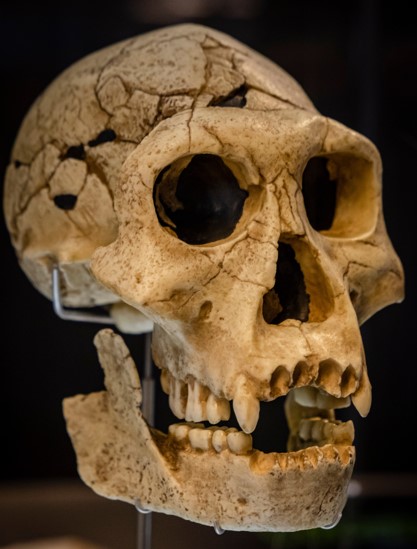It’s been almost 2 million years since the first archaic humans ventured out of their African homeland. Exactly whose idea it was to set off on this world tour is difficult to say, yet Homo erectus is generally seen as the most likely candidate – although a new study may be about to challenge that narrative.
ADVERTISEMENT
The earliest skeletal evidence for the presence of humans outside of Africa was found beneath a medieval village in Dmanisi, Georgia, in 1991, yet there’s still some uncertainty as to which species the prehistoric remains belong to. Dated to between 1.8 and 1.85 million years ago, the isolated jawbone discovered at the site was initially identified as a primitive form of H. erectus, until further discoveries began to muddy the waters.
A total of five skulls – four of which have their jaws attached – have now been recovered and are officially designated as Homo georgicus. Many scholars think that H. georgicus is in fact just an early iteration of H. erectus – which emerged in Africa some 1.9 million years ago before spreading across the globe – while others are less convinced.
It has also been suggested that the Dmanisi hominids may belong to Homo ergaster, although, like H. georgicus, there is some doubt as to whether this ancient lineage was a separate species or just another variety of H. erectus.

Five skulls belonging to H. georgicus have been discovered in Dmanisi, but are they really all from the same species?
Image credit: tolobalaguer.com/Shutterstock.com
To find out who the Dmanisi humans really were, the authors of the as-yet un-peer-reviewed study conducted phylogenetic analyses of the remains, thus identifying their place within the genetic family tree of the Homo genus. “In our phylogenetic analyses, none of the Dmanisi hominins form a sister taxon to either H. erectus or H. ergaster,” write the researchers.
“We hypothesise that the Dmanisi hominins did not share a unique common ancestor with H. erectus or H. ergaster, and we cannot support their attribution to either of those species,” they continue.
Moreover, the study authors found that the assemblage at Dmanisi is probably made up of two different human species, one of which they designate as H. georgicus while the remaining four skulls represent an “unnamed species”. This conclusion is based on the fact that the oldest of the five crania – which is believed to have belonged to a male individual – has a volume that is around 30 to 33 percent smaller than the other males in the group, as well as the females.
ADVERTISEMENT
“If we assume the Dmanisi hominins comprise a single species, we have an unexpected situation in which certain adult male crania may be notably smaller than other male crania and smaller than female crania,” write the study authors. “This pattern has not hitherto been reported in human evolution and would necessitate a considerable paradigm shift,” they say.
Weighing up all the possible explanations for this degree of variation, the researchers conclude that “the most parsimonious hypothesis for the Dmanisi hominins is that two species are present among the assemblage.”
In terms of chronology, they estimate that the H. georgicus individual was probably present in Dmanisi by around 1.8 million years ago, while the other four specimens accumulated at the site between 1.77 and 1.07 million years ago. More importantly, though, if the researchers’ theory that H. georgicus wasn’t directly related to H. erectus stands up to scrutiny, then the question of which human species first left Africa is blown wide open again.
ADVERTISEMENT
A preprint of the unpublished study can be found on bioRxiv.
Source Link: Oldest Human Skulls Outside Africa Might Not Be Homo Erectus After All